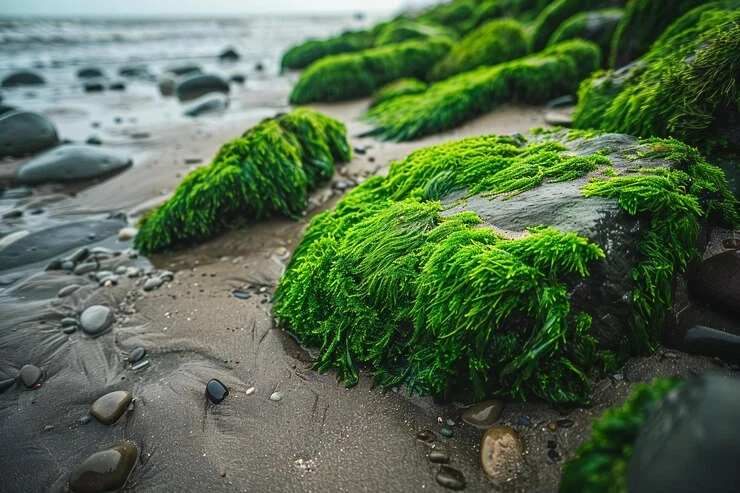The Isle of Mull, situated off the west coast of Scotland, is renowned for its breathtaking landscapes, marine biodiversity, and thriving seaweed industry. Seaweed from Mull has gained global recognition for its sustainability, nutritional properties, and contributions to the local economy. This natural wonder plays a significant role not only in culinary practices but also in skincare, medicine, and agriculture. With growing consumer interest in eco-friendly products, seaweed from Mull has emerged as a versatile superfood and a key player in the sustainable farming movement.
In this article, we dive deep into the various types of seaweed found on Mull, their uses, benefits, and the efforts made by locals to cultivate and harvest it sustainably.
A Brief Overview of Mull’s Seaweed Industry
The sea surrounding Mull offers the ideal environment for the growth of diverse types of seaweed. Thanks to its clean waters and favorable climate, the area supports rich biodiversity. For centuries, locals have been harvesting seaweed, with modern operations now focusing on sustainable techniques to protect marine ecosystems.
Seaweed farming on Mull provides not only employment opportunities but also contributes to reducing carbon emissions, aligning with global environmental goals.
Types of Seaweed Found on the Isle of Mull
The waters off Mull boast a variety of seaweed species, each with unique properties:
- Kelp (Laminaria digitata): A large brown seaweed commonly used in food supplements and fertilizers.
- Dulse (Palmaria palmata): A red seaweed with a mildly salty flavor, often enjoyed as a snack.
- Bladderwrack (Fucus vesiculosus): Known for its medicinal properties and used in skincare products.
- Carrageen Moss (Chondrus crispus): A source of carrageenan, widely used in food production for its thickening properties.
Nutritional Benefits of Mull Seaweed
Seaweed from Mull is packed with essential minerals, vitamins, and antioxidants. Key nutrients found in various seaweed species include:
- Iodine: Supports thyroid health.
- Calcium and Magnesium: Essential for bone strength.
- Vitamins A, B12, C, and E: Promote skin health and immunity.
- Omega-3 fatty acids: Help improve cardiovascular health.
Including seaweed in your diet may contribute to better digestion, weight management, and overall wellness.
Culinary Uses of Seaweed from Mull
Seaweed from Mull is widely appreciated for its culinary versatility. Many chefs incorporate it into traditional and modern recipes to enhance flavors naturally. Popular ways to use it in the kitchen include:
- Seaweed seasoning for soups and broths.
- Dulse chips as a healthy snack alternative.
- Seaweed butter for spreading on bread.
- Sushi wraps made from dried kelp.
The umami-rich taste of seaweed makes it a valuable ingredient in vegan and vegetarian dishes, offering a natural way to add depth to meals
Environmental Benefits of Seaweed Cultivation
The cultivation and harvesting of seaweed on Mull provide numerous environmental advantages. Seaweed acts as a natural carbon sink, helping to absorb carbon dioxide from the atmosphere. Furthermore, seaweed farming does not require pesticides or freshwater, making it a highly sustainable agricultural practice.
By improving water quality and providing shelter to marine life, seaweed beds also promote biodiversity in the surrounding areas.
The Role of Seaweed in Cosmetics and Skincare
Seaweed is increasingly popular in the cosmetic industry, thanks to its moisturizing and anti-inflammatory properties. Bladderwrack and other species from Mull are commonly found in:
- Facial masks for hydration.
- Seaweed-infused creams that reduce signs of aging.
- Bath soaks to relax muscles and nourish the skin.
These products are valued for being natural and environmentally friendly, aligning with the rising demand for sustainable beauty solutions.
Seaweed as a Natural Fertiliser
Seaweed from Mull is widely used as a fertilizer in organic farming. Rich in potassium, nitrogen, and trace elements, it enhances soil quality without the need for chemical additives. Farmers often apply seaweed-based fertilizers to improve crop yields, increase soil moisture retention, and prevent erosion.
Sustainable Seaweed Harvesting Practices on Mull
Sustainability lies at the heart of Mull’s seaweed industry. To prevent overharvesting, local farmers follow a rotational harvesting method, ensuring that seaweed beds can regenerate naturally. Additionally, many farms on Mull engage in research collaborations with marine conservation organizations to monitor the environmental impact of their activities.
This approach not only protects marine ecosystems but also guarantees the long-term viability of seaweed production.
The Economic Impact of Seaweed on the Local Community
The seaweed industry on Mull provides employment opportunities for locals and contributes to the island’s economy. Several small businesses have sprung up, offering seaweed-based products such as herbal teas, skincare items, and food supplements. Additionally, seaweed tourism is growing, with visitors participating in guided seaweed foraging tours to learn more about its uses and environmental significance.
Challenges and Opportunities in the Seaweed Industry
Despite its benefits, the seaweed industry faces certain challenges. The unpredictable weather conditions in Scotland can affect harvest cycles, while regulatory frameworks around marine resources can sometimes limit expansion. However, the rising demand for sustainable products and the health benefits of seaweed present significant growth opportunities for the industry.
Innovations such as seaweed bioplastics and biofuels could further transform the industry, opening new avenues for green solutions in the future.
Conclusion:
Seaweed from Mull stands as a prime example of how nature and innovation can work together to create sustainable solutions. With its wide range of applications—from food and skincare to agriculture—this natural resource plays a crucial role in health, the environment, and the economy. As more consumers embrace eco-friendly and nutrient-rich products, the seaweed industry on Mull is poised for continued growth.
By focusing on sustainable practices, the island community ensures that the rich biodiversity of its waters is preserved for generations to come. Seaweed from Mull is more than just a product—it represents a movement towards conscious consumption and environmental stewardship.




